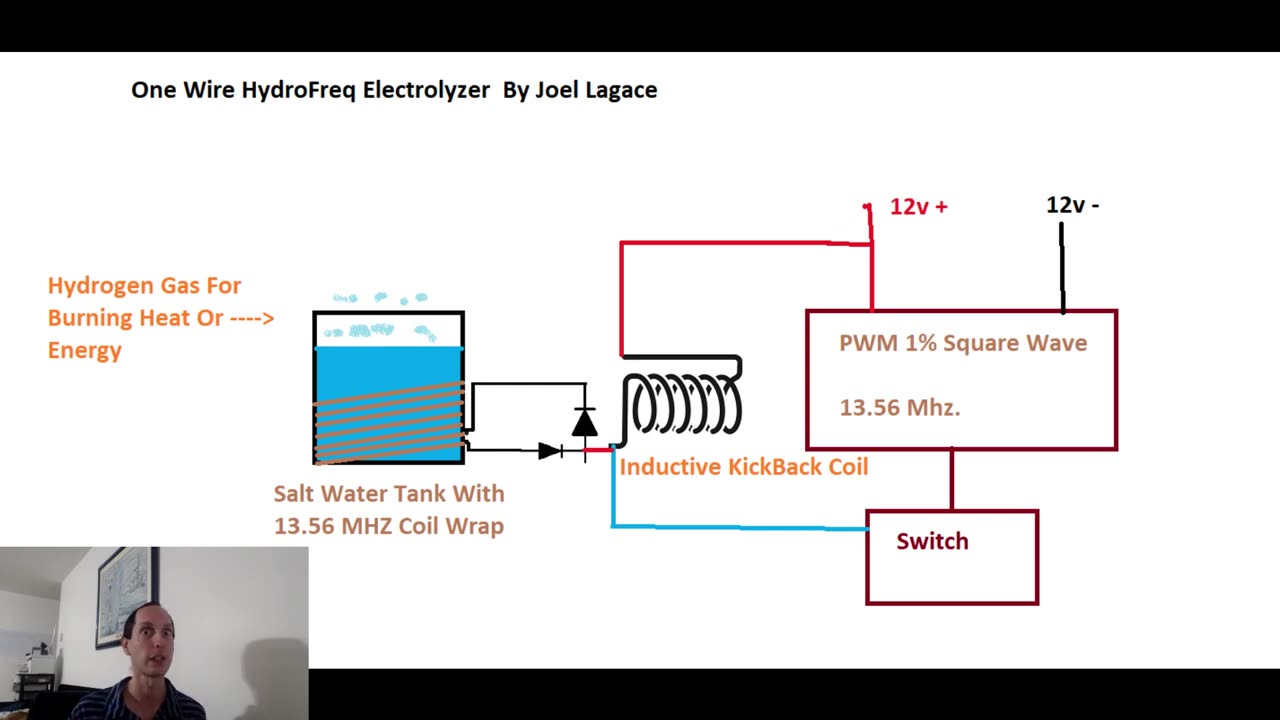Premium Only Content

One Wire HydroFreq Electrolyzer
Good day folks, I want to present you some relatively new mostly unknown science here. I ran the idea with Chat GPT first and was surprised it understood what I was getting at. But it was not without the usual negative quarks lol.
1. Preparation of the System
Setup: A setup is established where water (preferably saltwater, as it conducts RF energy better due to its ionic content) is placed in proximity to a coil antenna. This antenna is designed to emit RF energy at a specific frequency.
Frequency Selection: The chosen frequency for the RF energy is 13.56 MHz, a frequency that has been demonstrated to be effective in previous experiments like those conducted by John Kanzius.
2. Generation of RF Energy
Pulse Modulation: The RF energy is modulated to produce high-amplitude spikes or pulses. This modulation is characterized by a low duty cycle, meaning the RF energy is emitted in short, intense bursts rather than a continuous wave.
3. Inductive Kickback Capture
Inductor and Diode Setup: An inductor is integrated into the circuit, and a reverse diode is used to capture the inductive kickback (the voltage spike generated when the current flowing through an inductor is suddenly reduced or interrupted).
Energy Utilization: The energy from the inductive kickback is fed back into the system, potentially to the coil antenna, to enhance the efficiency of the process by reusing energy that would otherwise be lost.
4. Interaction of RF Energy with Water
RF Transmission to Water: The pulsed RF energy is transmitted to the water via the coil antenna. The antenna is positioned to ensure optimal exposure of the water to the RF field.
Molecular Dissociation: The intense electromagnetic field created by the RF pulses interacts with the water molecules. This interaction is theorized to cause the dissociation of water (H2O) into its constituent gases, hydrogen (H2) and oxygen (O2), in an efficient manner.
5. Collection and Utilization of Hydrogen
Gas Collection: The hydrogen gas produced through this process is collected. This may require a system to separate hydrogen from oxygen and to ensure safe handling, given hydrogen's flammable nature.
Energy Production or Utilization: The collected hydrogen can then be used as a fuel source. It could be burned to produce heat or fed into a fuel cell to generate electricity with a near zero current electrical input trigger.
Conclusion:
While 13.56 MHz is not the resonant frequency of water, it appears to be effective for the RF-induced dissociation of water into hydrogen and oxygen due to a combination of factors like efficient energy transfer, technical accessibility, and being within the ISM band. The exact physical mechanisms at play are complex and not fully understood, requiring further scientific investigation to clarify.
Forum http://typeright.social/forum
Please Help Support My Research https://youtu.be/pYXETBB40j0
-
 11:21
11:21
Joel Lagace
1 year ago $0.11 earnedReactive Over Unity
2651 -
 1:01:12
1:01:12
Timcast
1 hour agoMAGA Base FURIOUS With Trump Over H1-B Defense
63.2K71 -
 LIVE
LIVE
Dr Disrespect
2 hours ago🔴LIVE - DR DISRESPECT - ARC RAIDERS - ZERO NEGOTIATIONS
1,786 watching -
 LIVE
LIVE
Sean Unpaved
1 hour agoJameis Winston To START For Giants vs. Packers! | UNPAVED
59 watching -
 LIVE
LIVE
The Charlie Kirk Show
1 hour agoAmerica for Americans? + Operation Midway Blitz + Berkeley Aftermath | Jobob, McCoy, Schneider
3,983 watching -
 LIVE
LIVE
Side Scrollers Podcast
2 hours agoMario Galaxy Movie Trailer REACTION + Black Lesbian GOES OFF on Weiner + More | Side Scrollers
633 watching -
 15:49
15:49
Rethinking the Dollar
1 hour agoThis Crypto ‘Freeze Code’ Warning Changes Everything
502 -
 1:10:03
1:10:03
The Rubin Report
2 hours ago‘The View’s Sunny Hostin Tries to Shame John Fetterman Until He Puts Her in Her Place
89.8K44 -
 LIVE
LIVE
LFA TV
16 hours agoLIVE & BREAKING NEWS! | WEDNESDAY 11/12/25
3,174 watching -
 18:53
18:53
Professor Nez
1 hour agoDemocrats TURN on Chuck Schumer & BOOT HIM OUT of the Party!
7.31K6